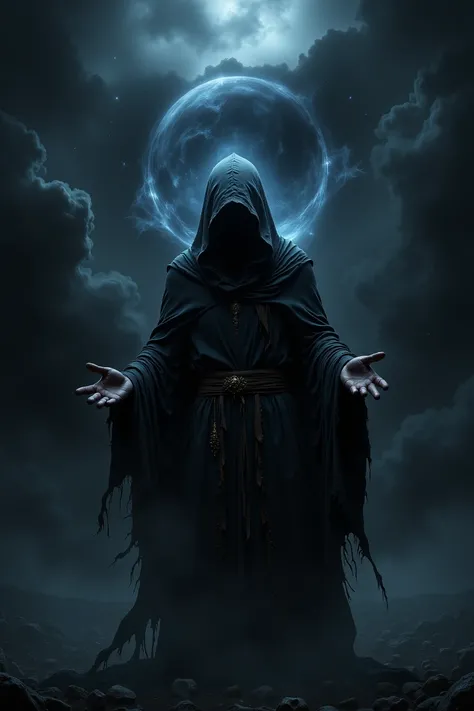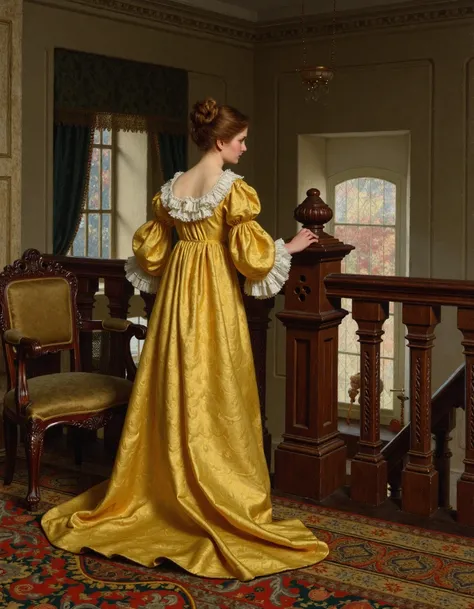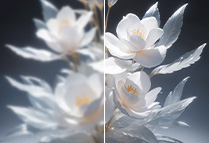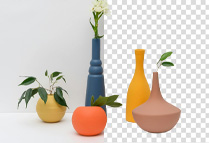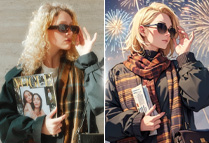There is a man sitting on a throne with a dog on his lap
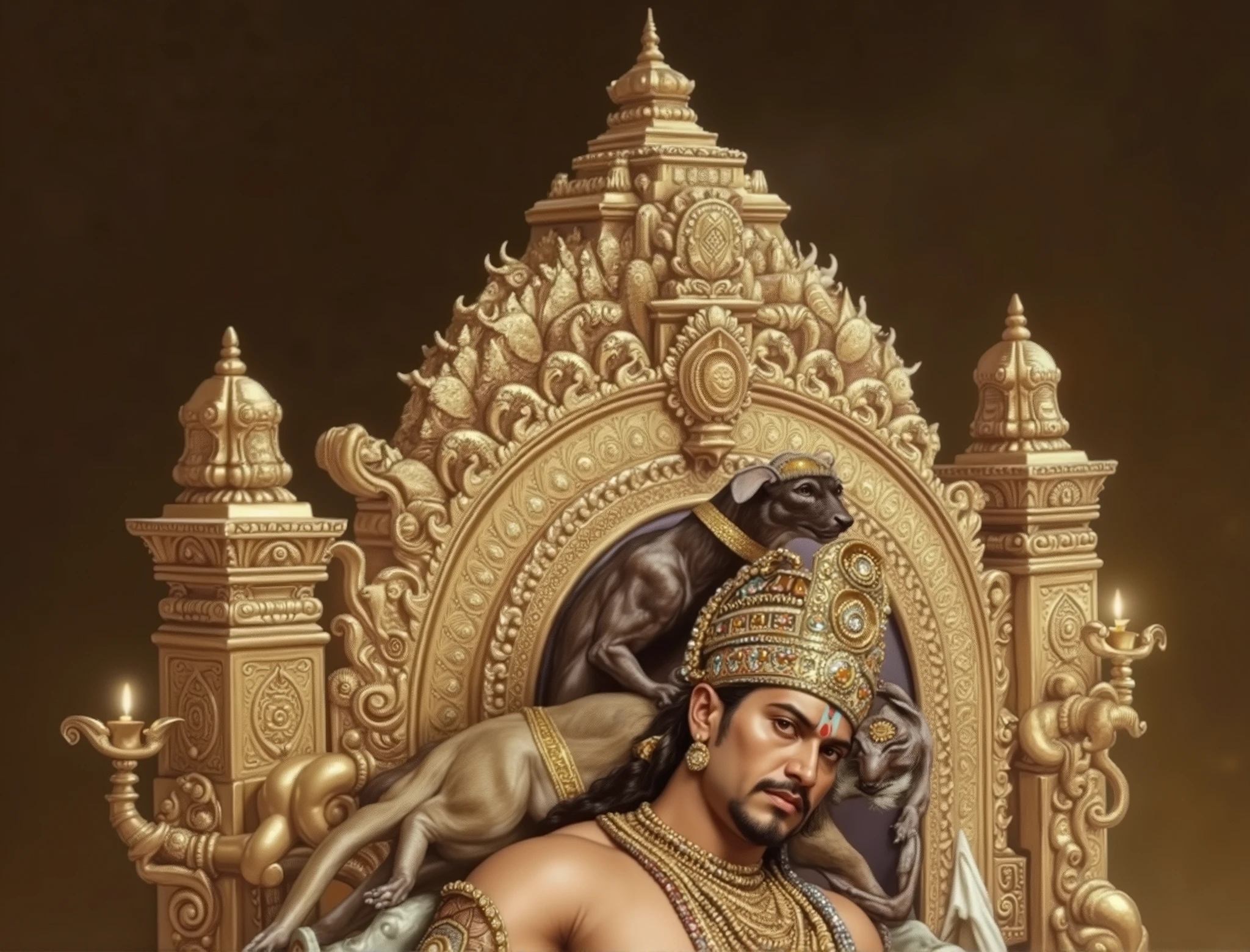
A regal and powerful South Indian king reclines on his grand golden throne, painted in the style of a classical oil painting reminiscent of Renaissance and Baroque masterpieces. The scene is imbued with dramatic lighting, deep shadows, and rich golden hues that enhance the depth and grandeur of the composition. The king possesses a commanding physique—a broad-shouldered, muscular warrior’s build complemented by a full, rounded belly, symbolizing both strength and royal indulgence. His rich brown skin is illuminated by the soft glow of candlelight, highlighting the sheen of his oiled skin and the intricate details of his golden jewelry. He is adorned in layers of heavy gold necklaces, finely engraved armlets, and thick bangles, while an ornate waistband rests over his belly. His elaborate bejewelled crown, set with rubies, emeralds, and pearls, glows under the warm light, its intricate carvings echoing the grandeur of South Indian temple architecture. His deep, kohl-lined eyes, a well-groomed beard, and a hint of a smirk exude both wisdom and authority. He lounges on an exquisitely carved golden throne, a work of divine artistry. The throne features intricate Dravidian temple motifs, Yali (mythical lion-like creatures) guarding the armrests, and celestial faces sculpted into the backrest, their expressions frozen in divine wisdom. The soft, painterly brushstrokes capture the texture of the throne’s gold filigree and the smooth silk of his flowing golden-yellow dhoti with emerald-green borders. On his shoulder perches a sacred mongoose, its fur a soft mix of golden and sandy hues, its small, intelligent eyes gleaming. It wears a delicate golden collar and appears to be whispering into the king’s ear, symbolizing divine guidance and strategic wisdom. The background is painted with soft, dark gradients, reminiscent of Caravaggio’s chiaroscuro technique, allowing the richly adorned king to emerge dramatically from the shadows. The use of classical oil painting aesthe
提示词
复制
A regal and powerful South Indian king reclines on his grand golden throne, painted in the style of a classical oil painting reminiscent of Renaissance and Baroque masterpieces. The scene is imbued with dramatic lighting, deep shadows, and rich golden hues that enhance the depth and grandeur of the composition. The king possesses a commanding physique—a broad-shouldered, muscular warrior’s build complemented by a full, rounded belly, symbolizing both strength and royal indulgence. His rich brown skin is illuminated by the soft glow of candlelight, highlighting the sheen of his oiled skin and the intricate details of his golden jewelry. He is adorned in layers of heavy gold necklaces, finely engraved armlets, and thick bangles, while an ornate waistband rests over his belly. His elaborate bejewelled crown, set with rubies, emeralds, and pearls, glows under the warm light, its intricate carvings echoing the grandeur of South Indian temple architecture. His deep, kohl-lined eyes, a well-groomed beard, and a hint of a smirk exude both wisdom and authority. He lounges on an exquisitely carved golden throne, a work of divine artistry. The throne features intricate Dravidian temple motifs, Yali (mythical lion-like creatures) guarding the armrests, and celestial faces sculpted into the backrest, their expressions frozen in divine wisdom. The soft, painterly brushstrokes capture the texture of the throne’s gold filigree and the smooth silk of his flowing golden-yellow dhoti with emerald-green borders. On his shoulder perches a sacred mongoose, its fur a soft mix of golden and sandy hues, its small, intelligent eyes gleaming. It wears a delicate golden collar and appears to be whispering into the king’s ear, symbolizing divine guidance and strategic wisdom. The background is painted with soft, dark gradients, reminiscent of Caravaggio’s chiaroscuro technique, allowing the richly adorned king to emerge dramatically from the shadows. The use of classical oil painting aesthe
共 0 条评论
0
0
